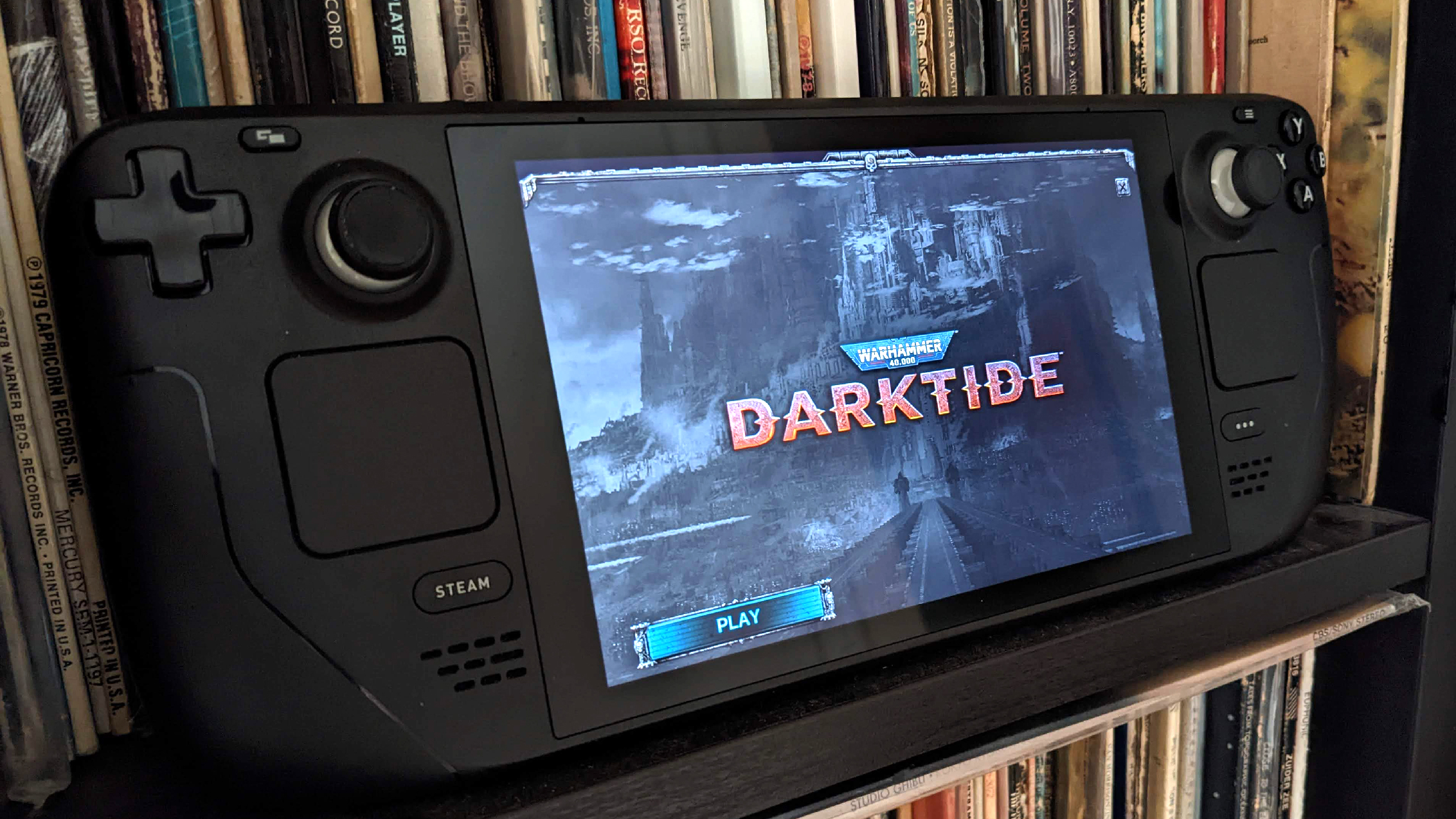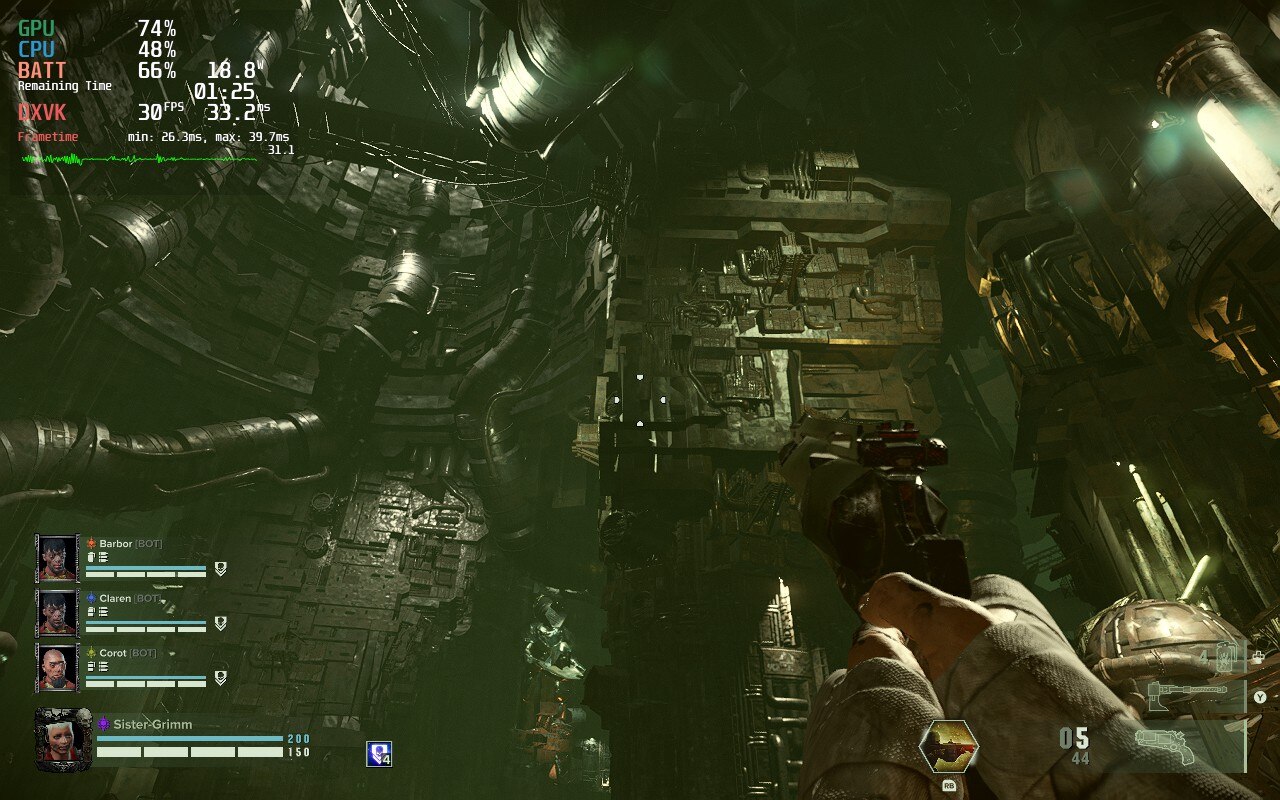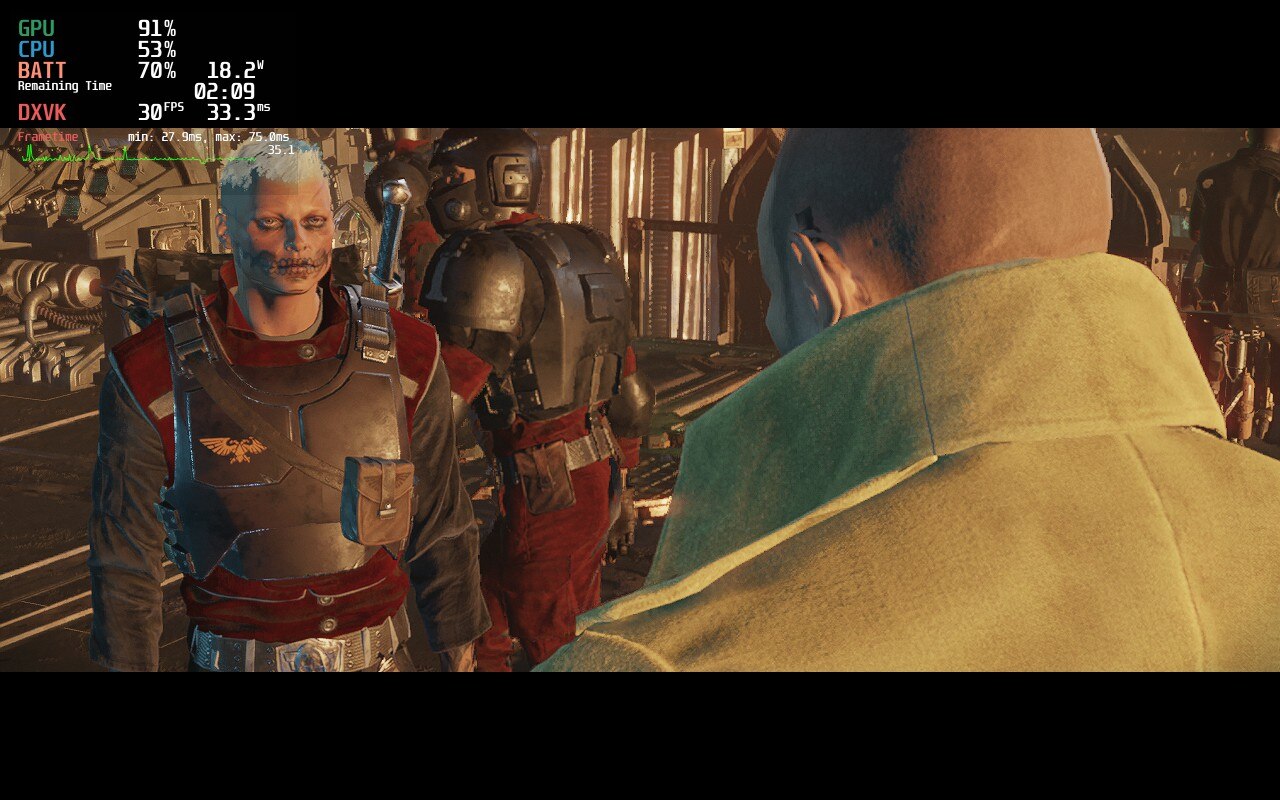Warhammer 40K: Darktide runs shockingly well on the Steam Deck
If you can handle playing a shooter at 30 fps, at least.

I was prepared for so much worse. After some controversy and grumbling over Warhammer 40K: Darktide's performance throughout its pre-order beta and launch, I didn't think there was a chance in hell it could offer a good experience on the Steam Deck, Valve's portable gaming machine. Heck, I had some trouble getting Darktide to run on my PC with an RTX 3070 at a stable 1440p, 60 fps. I've been holding off on trying the game on the Steam Deck for weeks, figuring Darktide's enemy hordes and enormous open areas would smash the Steam Deck like an Ogryn having a heated gaming moment.
Instead, it… worked?
I spent an hour playing Darktide on the Steam Deck, using the Deck's built-in frame limiter to lock the framerate to 30 fps. With in-game settings dialed way down, Darktide maintained that 30 fps for nearly the entirety of two missions, with only one major moment of stutter and a few quick drops to 27 fps. Completely playable—if you can handle controlling an intense first-person shooter with analog sticks, anyway.
For me, Darktide is another entry on the list of games that the Steam Deck can play, but isn't really ideal for. On the technical side, getting Darktide up to a stable 30 fps meant switching to the low graphics profile, then lowering a few settings yet further. I disabled ambient occlusion entirely, slightly lowered the default FOV (meaning the game has to draw less on the screen at a given time), and enabled AMD's FSR2 upscaling technique on the "balanced" setting. It certainly looks like a game on low settings with all those changes, but at 1280x800 on the Steam Deck's small screen, it's hard to notice too much lost detail. At 7 inches, this screen has about double the pixel density of my 27-inch 1440p monitor, so it can get away with a bit of aliasing.
After playing for a few minutes, I noticed that Darktide was keeping the Steam Deck's GPU working at about 90% load, while the CPU was much less encumbered, hovering around 50% or so. That told me I could probably go into the settings and tick a few options up higher, like "max ragdolls" which controls the physics of enemies when you send them flying, as well as the FOV. I'd tentatively set max ragdolls to nearly its lowest level, but was able to tick it up a couple notches without overloading the Steam Deck's CPU.
Developer Fatshark has warned players that Darktide is heavily CPU-dependent, but I have most of the CPU-punishing settings very low compared to where I have them on desktop, so it makes sense that the quad core CPU here can do the job at 30 fps.
It's impressive that Darktide runs on the Steam Deck, but is it actually fun to play there? A few things make me hesitant to say yes. One is that the small screen and the low resolution make it hard to see, let alone headshot, distant enemies. Darktide is generally a shadowy game, and enemies like to hide behind cover on the other side of a large room and take potshots at you. I found myself aiming my magnum at where I thought enemy heads would be and pulling the trigger hoping for a kill. On my PC I pretty much always know who I'm shooting at, and I can see their head pop or arm go flying off with enough clarity to feel a little jolt of satisfaction after the kill.
Keep up to date with the most important stories and the best deals, as picked by the PC Gamer team.
Then there's the controls: I don't think there's any chance I can play Darktide as effectively on the Deck as on PC. I can't pull an analog trigger to melee as quickly as I can click my mouse, and I definitely can't aim at distant heads as accurately. Analog sticks just ain't it for first-person shooters, especially at 30 fps, which feels like moving in slow motion once you're used to higher framerates. Melee does feel meatier with the triggers, but the milliseconds it takes to fully press a trigger to block can legitimately make the difference between blocking or getting hit.
The amazing thing about the Steam Deck is that I could find workarounds for some of these criticisms if I put in the time. I could use a trackpad to aim instead of analog sticks, approximating a mouse, or train my brain to use gyro controls; I could bind melee buttons to the clicky back paddles instead of using the triggers. It's a far better system for shooters than a console and a TV thanks to that flexibility. But 30 fps in a game with this much action, a game that feels so good to control on a more powerful PC, is still a deal-breaker.
Darktide is also a spectacle. Its missions take you through the dark heart of an impossibly vast city, full of bottomless chasms and vents spewing steam and fire and lights strobing behind 20-foot fans. On a powerful PC, even without ray tracing, the lighting and ambiance are spectacular. Playing on the Steam Deck requires giving all that up. It's incredible that it's playable at all, and I'm tempted to leave Darktide installed for my next trip so I don't miss a match if my friends are all eager to play. But Darktide deserves bigger, faster, and flashier to show off the most detailed version of Warhammer 40,000 we've ever seen.

Wes has been covering games and hardware for more than 10 years, first at tech sites like The Wirecutter and Tested before joining the PC Gamer team in 2014. Wes plays a little bit of everything, but he'll always jump at the chance to cover emulation and Japanese games.
When he's not obsessively optimizing and re-optimizing a tangle of conveyor belts in Satisfactory (it's really becoming a problem), he's probably playing a 20-year-old Final Fantasy or some opaque ASCII roguelike. With a focus on writing and editing features, he seeks out personal stories and in-depth histories from the corners of PC gaming and its niche communities. 50% pizza by volume (deep dish, to be specific).



